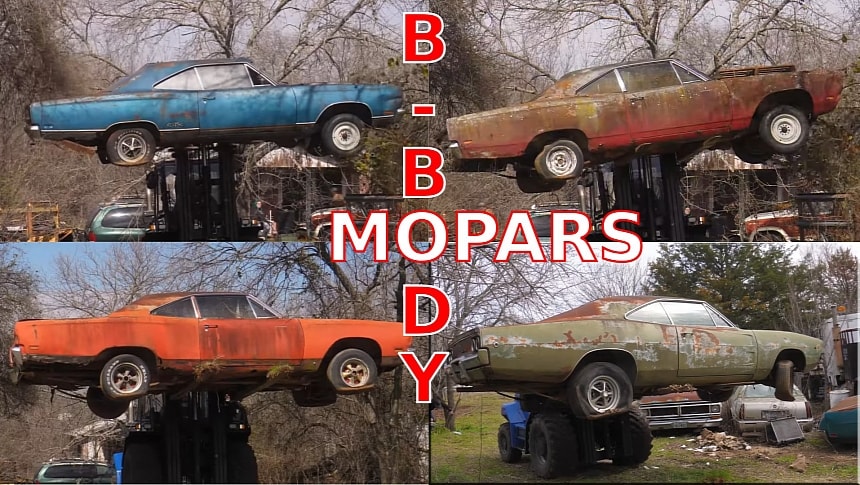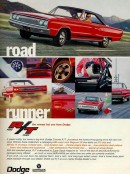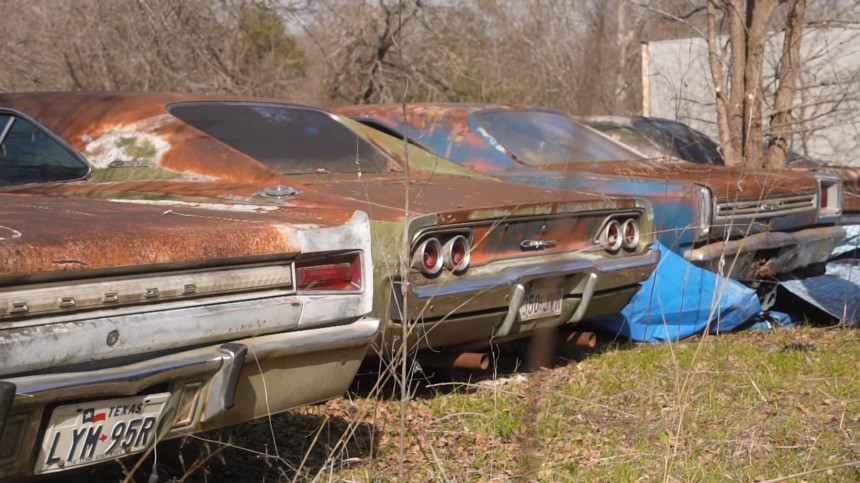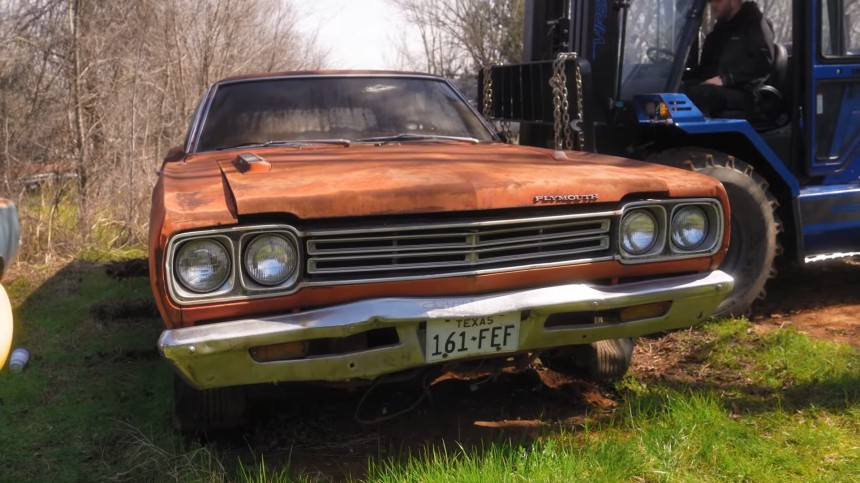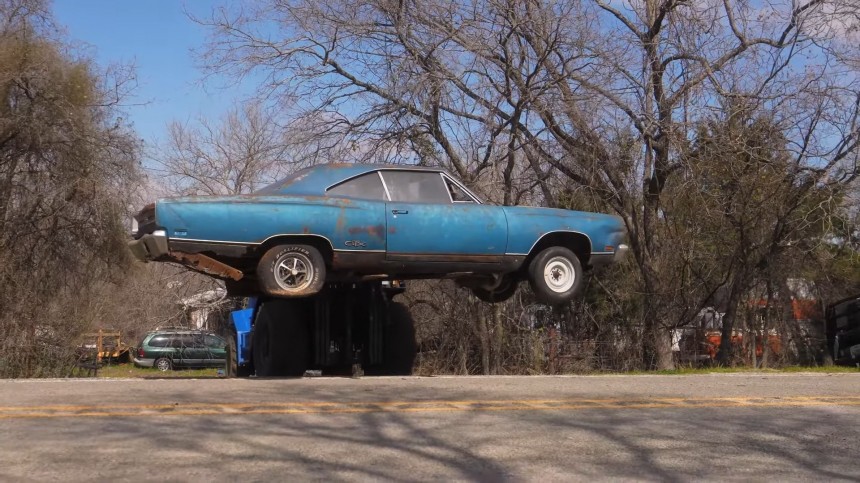Isn’t it curious how some cars seem to run out of luck just as they roll off the assembly lines, while others are born under a rainbow of shooting stars and become instant legends? Take the B-body Mopars, for instance. The most famous of them all – the Dodge Charger – missed the mark with the first generation but absolutely nailed in with the second.
On the other hand, the Plymouth Road Runner was an instant hit on the market when it meep-meep-ed first in 1968. And let’s not even open the topic of the Barracuda – the voracious aquatic predator A-body Plymouth totally lost it all to the thundering stallion from Ford in April of ’64. The payback was the E-body iteration from 1970, when the ‘Cuda and the other Dodge hemi-god, the Challenger, rode together.
The duo didn’t stay long in the production slats of Chrysler’s top hats: by the end of 1974, the twin cousins from Plymouth and Dodge bid farewell to Planet Piston. And this is where fortunes played another hand of Texas Hold ‘em with the ‘Cuda and the Challenger. As we know, Plymouth went bust, and the iconic nameplate will never rise again over dragstrips and stoplight Grand Prixes.
However, the world witnessed the second coming of the Challenger – and its second demise, too, at the end of 2023 – which stands to prove my theory from the opening of this article, namely that life isn’t always fair. This gets me thinking: what’s the best way for a car to leave the scene: the carmaker pulling the plug or rotting away in a field in Texas for over four decades?
Why Texas, and why the forty-year timeline? Because that’s what Dennis Collins ran into (not really, he went straight on the target) in Alvarado, Texas. Two ‘68s, three ‘69s, a ’67, and a ’64. Sadly (or luckily, depending on the perspective), none of them are (or were, at some point in their past and more merry lives) armed with the Sanctity of V8, His Street HEMIness the 426.
In fact, some of the cars don’t even carry their engines under the hood anymore after they were parked in a field in the early and mid-80s. Notably, out of the seven rust gems, only one, the 1967 Dodge Coronet, is a four-door car. It is also a 440, which initially sounds like it would nearly cancel out the extra two-door birthmark. Not so, in Coronet’s case, because the ‘440’ is not a cubic-inch denominator but a trim-level marketing hook.
In 1967, Dodge built 184,609 Coronets, most with a V8, but the 440-cubic inch (7.2-liter) was available – as standard equipment – on the R/T models only. The Road/Track Package debuted that year on the ‘road runner Coronet.’ This is not a typo nor a slip of mind – see the gallery for a brochure of the time. The first R/T Dodge was the Coronet, dubbed ‘road runner’ (no capital letters anywhere) by the smart Alecs from copywriting.
Speaking of road runners, there are two of them in the group rescued by Dennis Collins, both from 1969, both with 383 V8 belonging to them. That would be the Road Runner 383, not the regular big-block 6.3-liter eight-cylinder. With 335 horses and 425 lb-ft (339 PS, 576 Nm), low price, and sexy looks, the Road Runner (capital initials) was a serious Mopar muscle.
Interestingly, the Plymouth Road Runner and the Dodge Coronet R/T 'road runner' had one thing in common: the optional engine, which was the 425-hp, 490-lb-ft (431 PS, 664 Nm) Street HEMI. The elephant V8 was offered as the alternative motor for the two models – in fact, the 426-cube V8 was never a standard engine during its heyday.
Since we touched on this topic of optional powerplants, the other Plymouth B-Body that had the honor of being allowed to sport a HEMI was the GTX as opposed to the 440 Super Commando (the Plymouth equivalent to the Dodge’s Magnum), which was also regular equipment, and which is what the crusty GTX in the video has with it. Out of the 14,048 hardtops assembled for the model year, 13,866 came with the biggest Mopar passenger car motor of the time.
The B-body showoff is completed by the ‘68 Plymouth Satellite, completing the Belvedere-based trifecta - the GTX, in 1967, and Road Runner, the following year, came after the Satellite in the chronology. 136,136 of the former were assembled in 1968 – one of the greatest years for Chrysler in terms of icons and legends.
And I'm not exaggerating one drop, as I’ve saved the best for last: the keystone in this Mopar find is the most iconic Dodge of all time. It’s the 1968 Charger – the car that looked stunning from every angle. ‘A Mach 2 fighter jet’ was the descriptor in the sales literature at the time, and Steve McQueen shared the Bullitt poster with the sinisterly black 1968 Dodge Charger R/T.
This yard find isn’t one of the high-performance muscle cars of the nameplate, but an average Joe (by Charger standards, obviously) born with a 383 in it. The YouTuber doesn’t say it directly, but one of the four engines sitting right by the cars is from the Dodge.
Since there are two 440s and two 383s, and given how there’s no indication that this Dodge is an R/T, we can safely deduce that it is a 6.3-liter. Whether a two- or the better four-barrel, that’s something for a future episode when these cars get restored.
The duo didn’t stay long in the production slats of Chrysler’s top hats: by the end of 1974, the twin cousins from Plymouth and Dodge bid farewell to Planet Piston. And this is where fortunes played another hand of Texas Hold ‘em with the ‘Cuda and the Challenger. As we know, Plymouth went bust, and the iconic nameplate will never rise again over dragstrips and stoplight Grand Prixes.
However, the world witnessed the second coming of the Challenger – and its second demise, too, at the end of 2023 – which stands to prove my theory from the opening of this article, namely that life isn’t always fair. This gets me thinking: what’s the best way for a car to leave the scene: the carmaker pulling the plug or rotting away in a field in Texas for over four decades?
In fact, some of the cars don’t even carry their engines under the hood anymore after they were parked in a field in the early and mid-80s. Notably, out of the seven rust gems, only one, the 1967 Dodge Coronet, is a four-door car. It is also a 440, which initially sounds like it would nearly cancel out the extra two-door birthmark. Not so, in Coronet’s case, because the ‘440’ is not a cubic-inch denominator but a trim-level marketing hook.
In 1967, Dodge built 184,609 Coronets, most with a V8, but the 440-cubic inch (7.2-liter) was available – as standard equipment – on the R/T models only. The Road/Track Package debuted that year on the ‘road runner Coronet.’ This is not a typo nor a slip of mind – see the gallery for a brochure of the time. The first R/T Dodge was the Coronet, dubbed ‘road runner’ (no capital letters anywhere) by the smart Alecs from copywriting.
Interestingly, the Plymouth Road Runner and the Dodge Coronet R/T 'road runner' had one thing in common: the optional engine, which was the 425-hp, 490-lb-ft (431 PS, 664 Nm) Street HEMI. The elephant V8 was offered as the alternative motor for the two models – in fact, the 426-cube V8 was never a standard engine during its heyday.
Since we touched on this topic of optional powerplants, the other Plymouth B-Body that had the honor of being allowed to sport a HEMI was the GTX as opposed to the 440 Super Commando (the Plymouth equivalent to the Dodge’s Magnum), which was also regular equipment, and which is what the crusty GTX in the video has with it. Out of the 14,048 hardtops assembled for the model year, 13,866 came with the biggest Mopar passenger car motor of the time.
And I'm not exaggerating one drop, as I’ve saved the best for last: the keystone in this Mopar find is the most iconic Dodge of all time. It’s the 1968 Charger – the car that looked stunning from every angle. ‘A Mach 2 fighter jet’ was the descriptor in the sales literature at the time, and Steve McQueen shared the Bullitt poster with the sinisterly black 1968 Dodge Charger R/T.
This yard find isn’t one of the high-performance muscle cars of the nameplate, but an average Joe (by Charger standards, obviously) born with a 383 in it. The YouTuber doesn’t say it directly, but one of the four engines sitting right by the cars is from the Dodge.
Since there are two 440s and two 383s, and given how there’s no indication that this Dodge is an R/T, we can safely deduce that it is a 6.3-liter. Whether a two- or the better four-barrel, that’s something for a future episode when these cars get restored.
